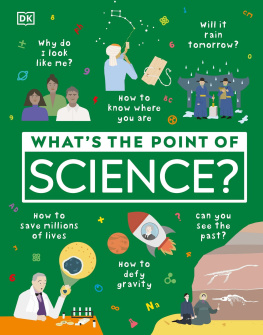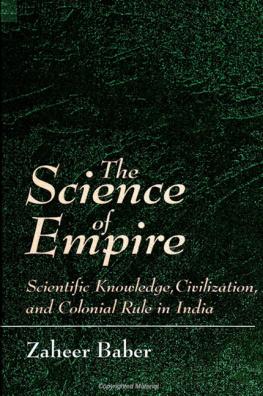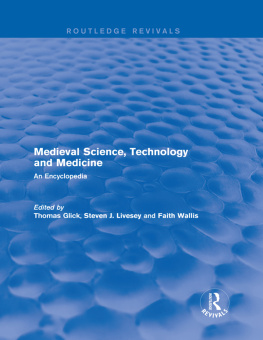Authors Note
M ost common people feel that the first rays of science broke out in the west and thus, started the wheel of development throughout the world. There was darkness in the field of science in the east. As such, there is a tendency to follow the west. The unawareness of the fact that we had a scientific tradition and a scientific point of view, resulted in the lack of faith that we could have a role in todays world.
However, at the beginning of the 20th century itself, Acharya Prafulla Chandra Rai, Brajendra Nath Seel, Jagdish Chandra Basu, Rao Saheb Vaze, etc., to name a few intellectuals, proved through their studies that India was in the forefront, not only in the field of religious philosophies, but also in the field of science and technology. Not just this, our ancestors had harmonised science and spirituality. It was through this that because of our scientific vision, science developed in accordance with and for the welfare of mankind and entire living beings in general. The modern world is feeling the significance of it today.
Many scholars have, with more proof, written about ancient Indian science in various articles and books. Prafulla Chandra Rais Hindu Chemistry, Brajendra Nath Seels The Positive Science of Ancient Hindus, Rao Saheb Vazes Hindi Surgical Science and Dharmapaljis Indian Science and Technology in the 18th Century, have revealed the traditions of science and technology in India. In recent times, Sanskrit Bharati has carried this forward by publishing many books in Sanskrit on science including botany, physics, metallurgy, machines, chemistry, etc. Besides this, M.P. Rao of Bangalore has carried out experiments in Aero-science and P.G. Dongre of Varanasi also carried out some experiments. The Vigyan Bharati, Mumbai and Pathey Kan, Jaipur tried to present to society the collected form of all the above efforts. The writings and speeches of Dr. Murli Manohar Joshi have impressively portrayed the ancient tradition of Indian science.
Besides, through the speeches and experiences of Friedzov Kapro, Grezukov, Jyofrieschve and esteemed Swami Ranganathanandaji and Swami Jitatmaanandaji of the Rama Krishna Mission about the coordination and the harmony between science and spiritual contemplation, which is the most important need of today, Indian scientific thought and its speciality is being revealed to the world. Many scholars are carrying out contemplations and experiments in this direction. Todays generation can get a direction from reading this literature; they can gain self-respect and can save the world from many problems which it is experiencing because of only materialistic development.
On the basis of the books and articles written by these scholars, I had given two speeches on the glorious tradition of science in India. Urged by my friends, I have expanded those two speeches and written them in the form of this book.
However, I do not consider myself to be the author of this book because whatever I have written here, all the facts and proofs that I have given, were given by various scholars in their books, speeches and articles. Hence, my role, at the most, has been that of a compiler. Whatever is written here is the creation, of those I have mentioned at the end of this book in the reference or glossary. I express my heartfelt gratitude to all those scholars.
Shri Sudarshanji (himself, a telecommunication engineer) who is the head of the Rashtriya Swayamsewak Sangh, read this book, corrected the mistakes in the language and suggested measures to make it more useful. I am therefore, obliged to him.
Smt. Purnima Majumdar translated my Hindi book into English, I entend my heartfelt gratitude towards her.
My friend Shri Arun Ojha from Patna read the book from beginning to end and with considerable effort, removed many linguistic errors because of which the book turned out to be even more useful. I am therefore grateful to him.
Dr. K.P. Joshi, Professor in Physics from Devi Ahilya University made some suggestions to clarify certain aspects, while Shri Jayant Gopal Ranade from Sangli made suggestions to include some references. Dr. Sadanand Damodar Sapre, Professor in the Electronics Department of Maulana Azad National Institute of Technology, Bhopal, once again read the book and gave suggestions for improvement.
Many friends advised that it would be proper to give the reference of the shlokas and facts mentioned in the book. Hence, chapter-wise references have been given at the end of the book.
I hope that besides acquainting the modern generation with Indias contributions in the field of science, it will also inspire them to study more and experiment. If this is possible even in a small measure, I shall consider my effort worth its while.
Suresh Soni
1
India: Past and Present
The glorious past
T here are many countries in the world. If we go deep into history, we realise that for ages, India has been the source of inspiration for humanity. Our ancient ancestors transmitted the feeling of Krinvanto Vishvam Aryam - we shall make the entire world excellent; Vasudhaiv Kutumbakam the entire world is one large family and Swadesho Bhuvantrayam - all three worlds (Bhoomi, Swarg and Paataal) are our own native land. Besides this, they also contributed arts, skill and philosophy for happiness and worldwide prosperity. It is for this reason that India was called the Preceptor of the Universe (Jagatguru) in ancient times. One can see reflections of it in the writings of the western philosopher, Mark Twain. He says, India is the land of religious orders, the cradle of humanity, the birthplace of languages, mother of history, grandmother of the Puranas and the great grandmother of tradition. Whatever valuable and creative things are there in the history of man, all are available in India. Everyone is eager to get a glimpse of this land and they will not be ready to sacrifice it for all other things of this world.
India was not just the leader in dharma, philosophy, metaphysical knowledge and human values, but also in trade, commerce, art and skill.
A famous Swiss writer, Bajoran Landstram who had studied everything from the ancient Egyptians to the stories about the various travels and the great explorers till the discovery of America, wrote in his book, The Discovery of India, There were many paths and means, but only one goalto reach the famous land of India, which is full to the brim with gold, silver, valuable stones and gems, tempting foods, spices and clothes. Many thinkers and researchers like Hegel, Galileo and Marco Polo have similar experiences as those of Bajoran Landstram. That is why India has been called The Golden Bird for ages.
The country remained the Jagatguru and The Golden Bird for years. The continuous barbaric invasions on it for 1500 years, some social flaws, the relentless attacks of the Muslims and the economic exploitation by the British in the 190 years rule, made the Golden Bird bankrupt. Indian agriculture, industry and trade were ruined. That is why, today, we find India at 124th position in the countries of the world.
Todays generation is faced with the challenge of reviving Indias position as the Golden Bird and the Jagatguru. The freedom fighters and thinkers dream of a glorious India is to be fulfilled by the present generation.
For this, it is essential that progress be made in the arts, skill, trade, commerce, agriculture, etc. Principally, the world still recognises Indias superiority in the fields of Dharma and philosophy. However, when the question of physical prosperity or a society whose behaviour is in accordance with the philosophy arises, it becomes difficult to reply. Hence, it is necessary to contemplate on the hypothesis of all-round progress and its methods.













